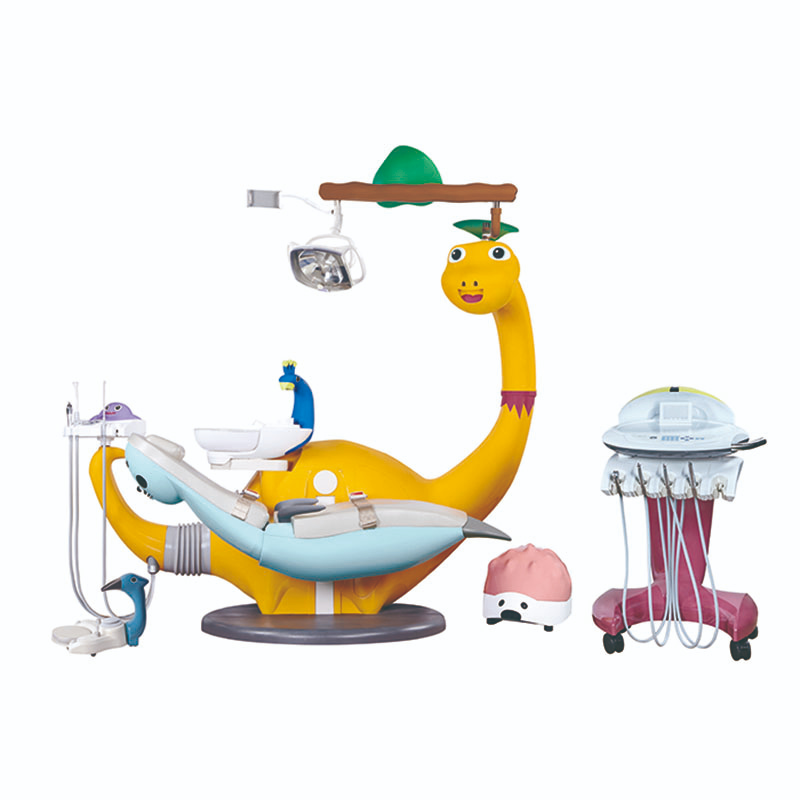What Are The Different Parts Of A Dental Chair?
Dental chairs are integral to any dental practice, designed to provide comfort for patients while enabling dentists to perform a variety of procedures efficiently. Understanding the various components of a dental chair can enhance appreciation for its role in dental care. This article explores the different parts of a dental chair, detailing their functions and significance.
Main Parts of a Dental Chair
1. Base
The base of a dental chair is fundamental for stability and support. Typically constructed from durable materials like stainless steel, it houses essential components such as hydraulics and motors. These mechanisms allow for seamless height and reclining angle modifications, making them suitable for a variety of dental treatments while also protecting patients.
2. Seat and Backrest
The seat and backrest are designed with patient comfort in mind. Often padded with high-quality cushioning materials, they provide optimal support during extended procedures. The ergonomic design helps reduce strain on the patient’s body, promoting a secure and comfortable experience throughout their visit.
3. Armrests
Armrests improve patient comfort by offering a place for their arms to rest. Many armrests are adjustable or retractable, giving the dentist easier access during procedures. This feature not only contributes to patient relaxation but also aids in maintaining stability during treatment.
4. Headrest
The headrest is crucial for proper patient positioning. It can be adjusted to support the head and neck, ensuring comfort while allowing the dentist clear access to the oral cavity. Some models feature foldable or adjustable headrests that enhance accessibility and adaptability for different patients.
5. Foot Control
Foot controls enable hands-free operation of the dental chair, allowing dentists to adjust its position without interrupting their workflow. This feature enhances efficiency during procedures by facilitating seamless movement between the patient and instruments.
6. Delivery System
The delivery system is vital for housing various dental instruments necessary for treatment. It provides easy access to tools such as handpieces, suction devices, and syringes, enabling dentists to work efficiently without constantly reaching for equipment.
7. Dental Light
A dental light, typically mounted above the chair, provides optimal illumination during procedures. Proper lighting is essential for visibility and precision in dentistry, making this component critical for effective diagnostics and treatment outcomes.
8. Instrument Tray
The instrument tray, often located beside the dental chair, holds various tools and materials required during treatments. This feature ensures that everything the dentist needs is within easy reach, promoting organization and efficiency during procedures.
Additional Features
1. Infection Control
Modern dental chairs are designed with infection control in mind. Features such as seamless surfaces and easy-to-clean materials help maintain a sanitary environment, which is crucial in preventing cross-contamination during dental treatments.
2. Ergonomics
The ergonomic design of dental chairs is important for both patient comfort and dentist usability. Adjustable components and pressure mapping can improve the chair's function for diverse procedures and particular patient needs, decreasing strain on both patients and dental personnel.
Specialized Components
1. Pediatric Features
Dental chairs designed specifically for pediatric patients often include additional features such as smaller dimensions, colorful designs, or fun themes to make children feel more comfortable during their visit. Some pediatric chairs may also include built-in entertainment options, like as screens or toys, to keep young patients occupied during treatment.
2. Adjustable Height Mechanism
An adjustable height mechanism allows dentists to customize the chair's height according to their own comfort level as well as that of the patient. This feature is particularly important in ensuring that the dentist maintains an ergonomic posture during procedures, reducing fatigue and enhancing precision.
3. Massage Functionality
Some modern dental chairs come equipped with massage functionality, providing gentle vibrations that can help relax patients before or during treatments. This new function can dramatically improve the patient experience by reducing anxiety associated with dental visits.
Importance of Quality Materials
1. Upholstery Materials
The upholstery used in dental chairs plays a significant role in both durability and comfort. High-quality materials are often resistant to stains and easy to clean, which is essential in maintaining hygiene standards in a clinical environment.
2. Structural Integrity
The structural integrity of a dental chair is paramount; it must withstand frequent adjustments and support various weights without compromising safety or comfort. Manufacturers often use reinforced materials that ensure longevity while maintaining aesthetic appeal.
Maintenance Considerations
1. Regular Cleaning Protocols
Establishing regular cleaning protocols is essential for maintaining the hygiene of dental chairs. This includes daily disinfection of surfaces that come into contact with patients, as well as periodic deep cleaning to remove any buildup of debris or contaminants.
2. Routine Inspections
Routine inspections should be conducted to ensure all mechanical components are functioning properly. This involves inspecting hydraulic systems, electrical connections, and any moving parts that may need maintenance or correction over time.
Conclusion
Understanding the various parts of a dental chair is crucial for appreciating its role in dental practice. Each component is meticulously designed with both patient comfort and operational efficiency in mind, making modern dental chairs indispensable tools in effective dental care.




Leave a comment